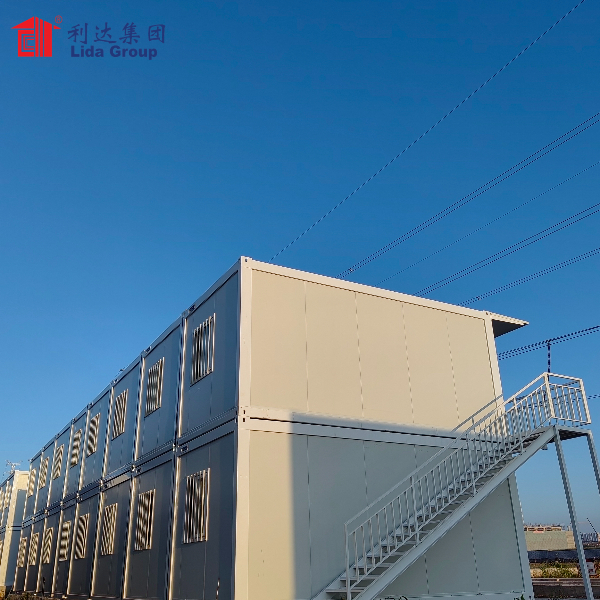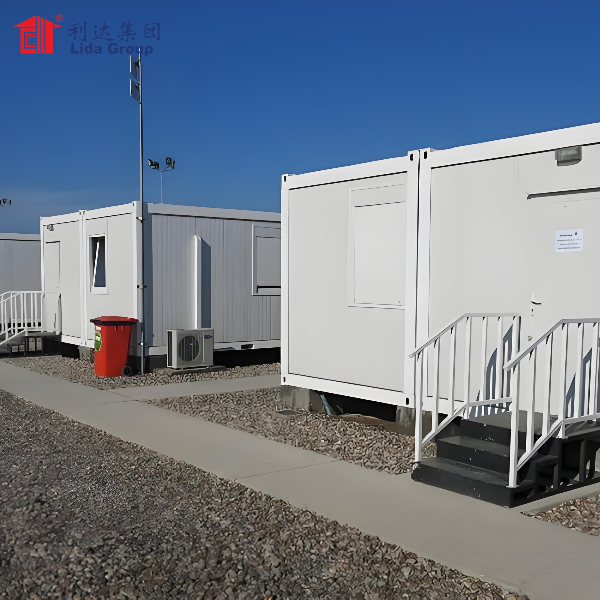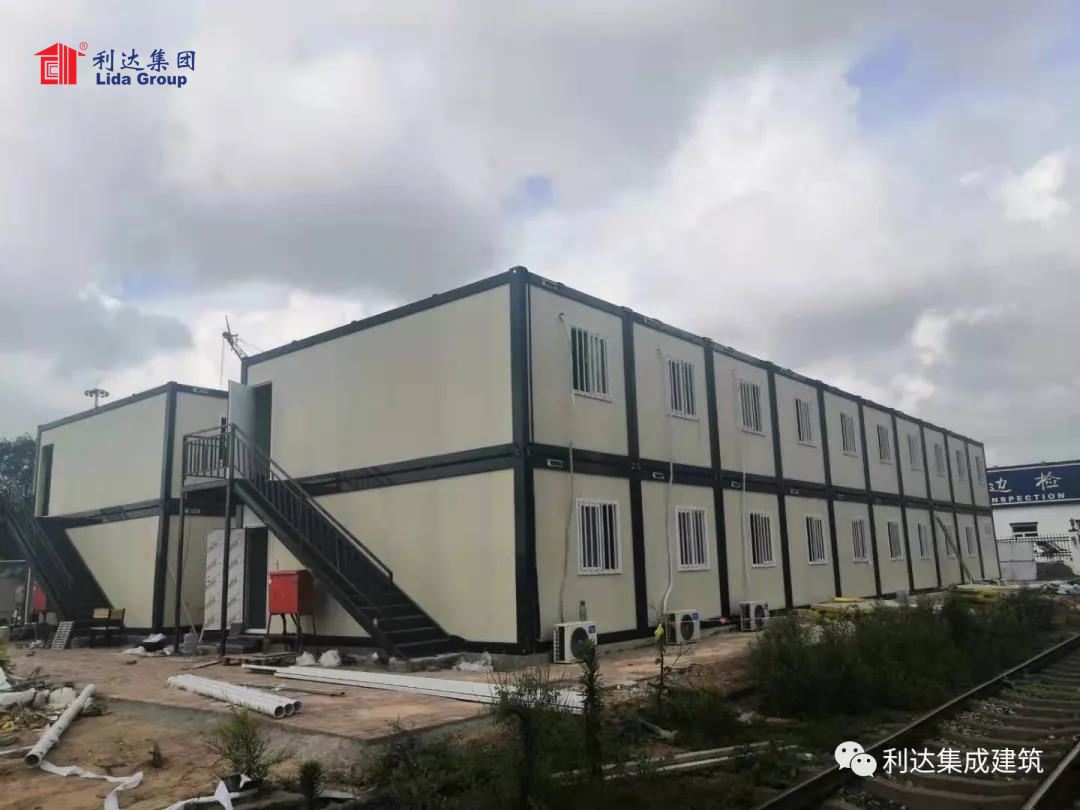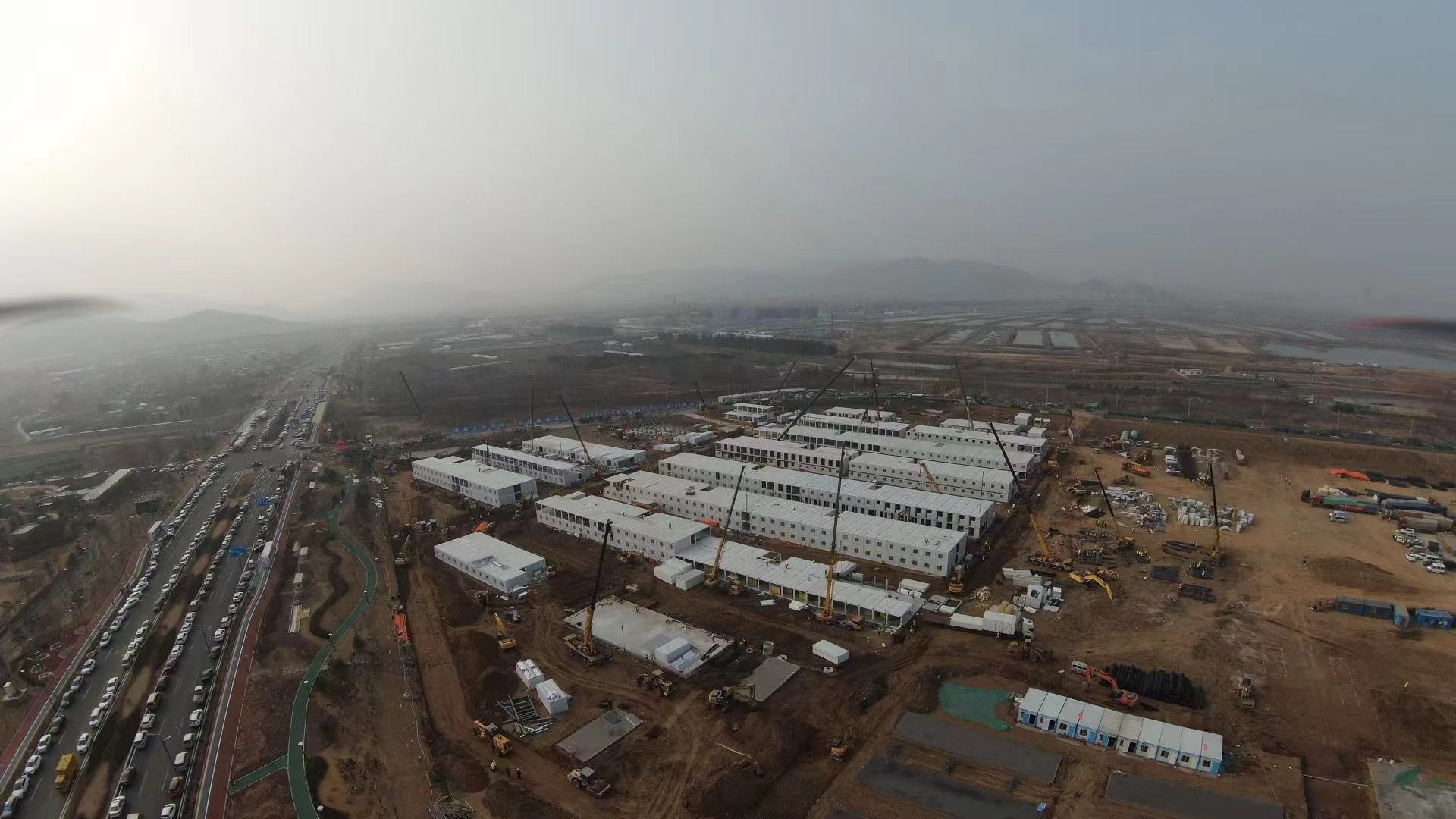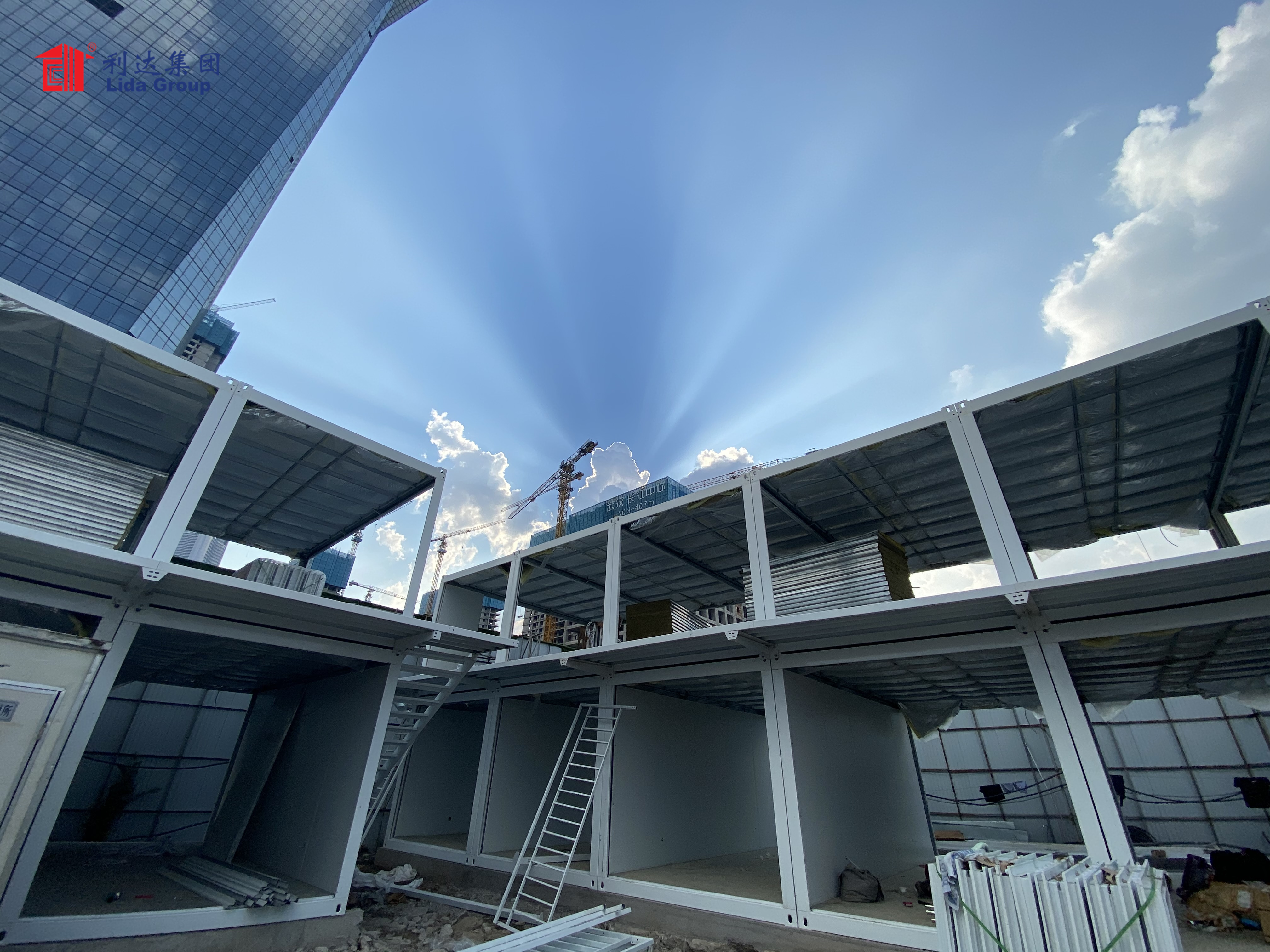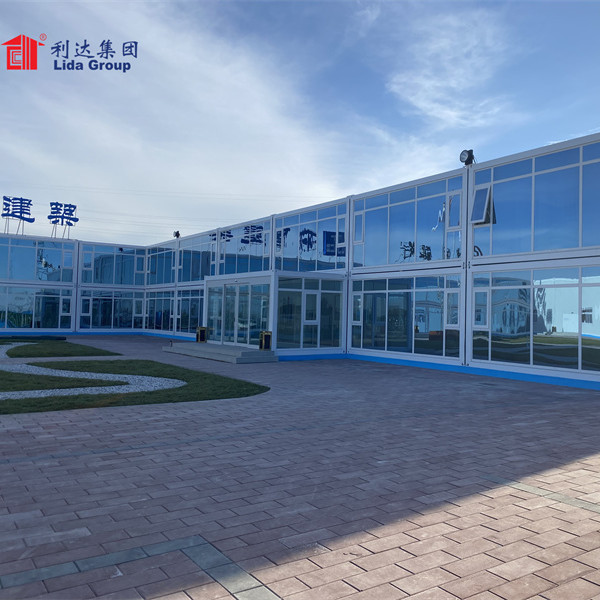Lida Group Long Service Life up to 30 Years: Temporary Offices, Workshop Mobile Container House, and Prefabricated Container House Solutions
Introduction
In the ever-evolving landscape of construction and workspace solutions, the demand for flexible, cost-effective, and durable structures has surged. The Lida Group has emerged as a pioneer in the production of prefabricated container houses, specifically designed to serve as temporary offices, workshops, and living spaces. With a service life of up to 30 years, these mobile container houses offer a sustainable and efficient alternative to traditional building methods. This article explores the features, benefits, applications, and future potential of Lida Group’s container houses, highlighting their significance in modern construction and work environments.
Understanding Container Houses
What Are Container Houses?
Container houses are prefabricated structures made from repurposed shipping containers. These houses can be modified and customized to create functional living and working spaces. The Lida Group specializes in developing mobile container houses that are built to high standards of quality, durability, and environmental sustainability. They offer a versatile solution for various applications, from temporary offices to workshops and accommodations.
Key Features of Lida Group Container Houses
- Durability and Longevity: Designed to withstand harsh weather conditions, Lida Group’s container houses have a projected service life of up to 30 years, making them a long-term solution for temporary and permanent needs.
- Customizable Designs: These container houses can be tailored to meet specific client requirements, including layout, size, and interior finishes.
- Mobility: The modular nature of container houses allows for easy transportation and relocation, making them ideal for projects that require flexibility.
- Rapid Deployment: Container houses can be assembled quickly, often within a few days, allowing for immediate use in various settings.
- Cost-Effectiveness: Compared to traditional construction, container houses offer a more affordable solution, both in terms of initial investment and long-term maintenance.
Benefits of Lida Group Container Houses
1. Cost-Effectiveness
One of the primary advantages of Lida Group’s container houses is their affordability:
- Lower Construction Costs: Utilizing prefabricated materials significantly reduces labor and material expenses compared to traditional building methods.
- Long-Term Savings: These houses are designed for durability and low maintenance, leading to reduced operational costs over time.
2. Flexibility and Adaptability
Lida Group’s container houses provide exceptional flexibility:
- Varied Configurations: They can be designed in various layouts and sizes, accommodating different uses from offices to workshops.
- Expandable Designs: Additional containers can be added or modified as needs change, allowing for easy expansion or downsizing.
3. Speed of Deployment
The rapid deployment of container houses is a significant advantage:
- Quick Assembly: Most container houses can be assembled in a matter of days, allowing users to occupy the space much sooner than traditional construction methods permit.
- Immediate Availability: This speed is particularly beneficial for urgent housing needs, such as disaster relief or temporary project sites.
4. Sustainability
Lida Group’s container houses promote sustainability through:
- Recycling and Repurposing: Using shipping containers that would otherwise go to waste contributes to reducing environmental impact and promotes a circular economy.
- Energy Efficiency: Many designs incorporate insulation and energy-efficient systems, minimizing energy consumption and carbon emissions.
5. Versatility
Container houses can serve a wide range of applications:
- Temporary Offices: Ideal for construction sites or remote projects, providing a comfortable and functional workspace.
- Workshops: These units can be equipped with necessary tools and equipment, creating a mobile workshop for various industries.
- Living Spaces: Container houses can also serve as temporary accommodations for workers or travelers, offering comfort and convenience.
Applications of Lida Group Container Houses
1. Temporary Offices
Container houses are an excellent solution for temporary office spaces:
- Construction Sites: They can be used as on-site offices for project managers and staff, providing a comfortable working environment close to the action.
- Remote Locations: In areas lacking traditional office infrastructure, container houses can be deployed quickly to facilitate business operations.
2. Workshops
The versatility of container houses extends to workshop applications:
- Mobile Workshops: Container houses can be transformed into fully equipped workshops, allowing for manufacturing or assembly operations to occur on-site.
- Tool Storage: These units can provide secure storage for tools and equipment, ensuring that they are safe and easily accessible.
3. Residential Living
Container houses can also function as living spaces:
- Temporary Housing: Ideal for workers on short-term assignments or for use during renovations or construction of traditional homes.
- Affordable Housing Solutions: As housing costs rise, container houses offer an economical alternative for families and individuals seeking affordable living options.
4. Educational Facilities
Container houses can serve educational purposes:
- Classrooms: In areas lacking traditional school buildings, container houses can be converted into classrooms, providing essential learning environments for students.
- Training Centers: These units can be used for vocational training, offering hands-on learning opportunities in various fields.
5. Healthcare Applications
The healthcare sector can benefit from the flexibility of container houses:
- Mobile Clinics: Container houses can be set up as temporary clinics or vaccination centers, providing essential medical services in remote or underserved regions.
- Emergency Response Facilities: In the aftermath of disasters, these units can serve as triage centers or temporary hospitals, helping to address urgent medical needs.
Design Considerations for Lida Group Container Houses
1. Space Optimization
Efficient use of space is crucial in container house design:
- Open Floor Plans: Many designs incorporate open layouts to maximize usable space and create a spacious feel.
- Multi-Functional Areas: Designing areas for multiple purposes (e.g., a living room that doubles as a workspace) enhances functionality.
2. Insulation and Climate Control
Proper insulation is vital for comfort:
- Thermal Insulation: Ensuring that the container house is well-insulated helps maintain comfortable indoor temperatures, reducing the need for excessive heating or cooling.
- Ventilation Systems: Incorporating effective ventilation systems can help maintain air quality and comfort within the living spaces.
3. Aesthetic Appeal
While functionality is essential, aesthetics should not be overlooked:
- Exterior Finishes: Creative exterior designs, such as wood cladding or vibrant paint, can enhance the visual appeal of the container houses.
- Interior Design: Thoughtful interior design can create a welcoming atmosphere, making the container house feel like home.
4. Safety and Security
Safety is a top priority for any housing solution:
- Structural Integrity: Ensuring that the container house is structurally sound and adheres to safety standards is vital for occupant safety.
- Security Features: Incorporating secure locks, alarms, and surveillance systems can enhance the safety of the units.
Overcoming Challenges with Container Houses
1. Regulatory Compliance
Navigating local building codes can be a challenge:
- Understanding Local Regulations: It is essential to research and understand local building codes and zoning laws prior to construction.
- Advocacy for Acceptance: Advocating for regulatory changes that support the use of container homes can help broaden their acceptance in various communities.
2. Public Perception
Misconceptions about container homes can hinder their acceptance:
- Education and Outreach: Providing information about the benefits and possibilities of container houses can help change public perceptions.
- Showcasing Success Stories: Highlighting successful container home projects can demonstrate their viability and appeal, helping to dispel myths.
3. Initial Investment Costs
While container houses often save money in the long run, initial costs can be a concern:
- Financing Options: Offering diverse financing solutions can help potential homeowners or businesses manage upfront costs more effectively.
- Long-Term Value: Educating clients on the long-term savings associated with durability and low maintenance can help justify the initial investment.
Innovations in Container House Design
1. Advanced Construction Techniques
Innovations in construction methods improve the quality and efficiency of container houses:
- Modular Construction: The use of modular components allows for quicker assembly and enhances design flexibility, enabling more complex structures.
- 3D Printing: Emerging technologies, such as 3D printing, can be integrated into the design process, allowing for unique architectural features and faster production times.
2. Sustainable Technologies
The incorporation of sustainable technologies enhances the environmental benefits of container houses:
- Renewable Energy Integration: Many designs include solar panels and other renewable energy sources to reduce reliance on traditional power grids.
- Water Management Systems: Innovative systems for water collection and filtration can be integrated into container designs, promoting self-sufficiency.
3. Smart Home Features
The integration of smart technologies into container houses is becoming increasingly popular:
- Home Automation: Smart home systems allow occupants to control lighting, security, and energy use remotely, improving convenience and efficiency.
- Monitoring Systems: Real-time monitoring of energy consumption and environmental conditions can help homeowners optimize their resource use.
Case Studies: Successful Container House Projects
1. Mobile Office Solutions for a Mining Company
A mining company sought flexible office solutions and turned to container houses for their workspace. The design included open-plan layouts and collaborative spaces, fostering creativity and innovation while keeping costs low. The ability to relocate the offices as the company expanded proved invaluable, showcasing the versatility of container structures.
2. Educational Facility in Rural Areas
In a remote area lacking educational infrastructure, container houses were converted into classrooms for local students. This initiative provided essential learning environments and demonstrated the effectiveness of container solutions in addressing educational needs.
The Future of Container Houses
1. Increasing Demand
The demand for container houses is expected to rise as urbanization continues and the need for affordable housing solutions grows:
- Urbanization Trends: As more people migrate to urban areas, container homes can provide efficient housing solutions in densely populated regions.
- Evolving Housing Preferences: The trend towards minimalism and eco-friendly living will drive further interest in container homes.
2. Technological Advancements
As technology continues to evolve, the possibilities for container houses will expand:
- Smart Home Integration: Future container homes may see increased integration of smart technologies, allowing homeowners to manage energy use, security, and convenience features remotely.
- Innovative Materials: Advances in sustainable building materials will enhance the eco-friendliness and efficiency of container homes.
3. Community Developments
The future may also see the emergence of container home communities:
- Planned Developments: Developers may create entire neighborhoods of container houses, fostering a sense of community while promoting sustainable living.
- Innovative Urban Solutions: Container homes can be integrated into urban planning efforts, addressing housing shortages while enhancing the aesthetic appeal of cityscapes.
Conclusion
Lida Group’s container houses, with a long service life of up to 30 years, represent a revolutionary approach to temporary offices, workshops, and living solutions. With their affordability, rapid construction, and environmental benefits, these houses are well-equipped to meet the diverse needs of today’s society. As the challenges of traditional housing and workspace become more pressing, the appeal of prefabricated container houses will continue to grow.
By embracing the potential of container houses, individuals and communities can enhance their living and working arrangements while minimizing their environmental impact. The innovative design and quick deployment of these homes pave the way for a more sustainable and efficient future in housing and workspace solutions. As the world looks for answers to pressing challenges, container houses stand out as a viable and appealing option for those seeking flexible, functional, and eco-friendly living and working spaces.





